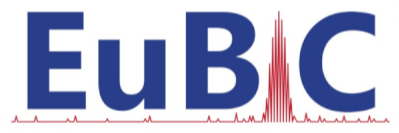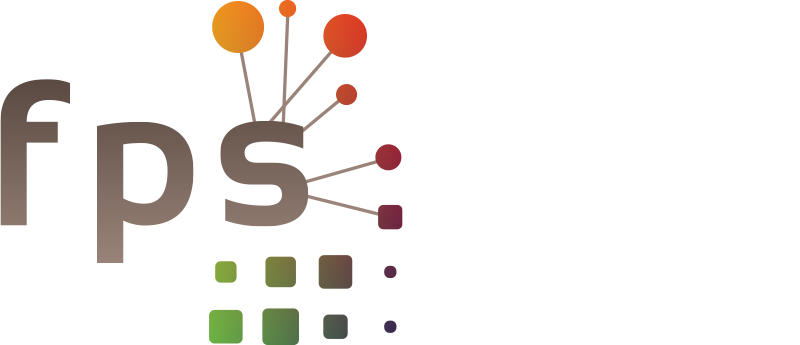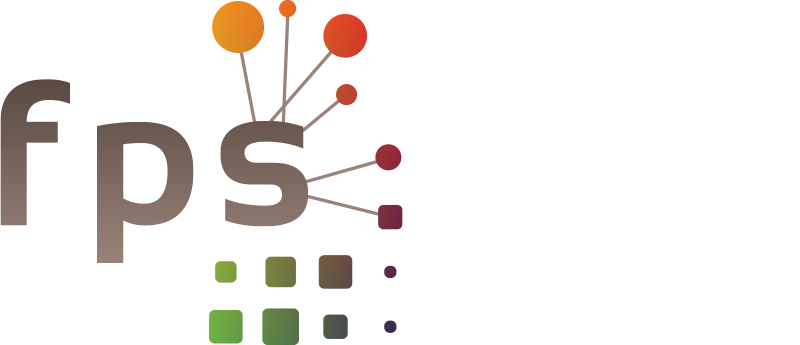
Marie LOCARD-PAULET
Institut de Pharmacologie et de Biologie Structurale
Équipe "Protéomique et Spectrométrie de Masse de Biomolécules"
ProteoToul
Toulouse
 Every two years, the European Bioinformatics community for Mass Spectrometry (EuBIC-MS) organizes a developers meeting. During one week, people working on different aspects of mass-spectrometry data analysis gather in a somewhat remote location to work together on hot and/or useful topics proposed by the community. This year, it took place in Brixen (northern Italy) in a really beautiful monastery surrounded by snowy mountain tops. We all (~60 persons) stayed there for four days and a half. The first morning was dedicated to three keynote lectures, and we then split into seven groups to work together on community-driven projects. An evening was dedicated to a lively poster session, another one to the social event: a sledging session further up in the mountain.
Every two years, the European Bioinformatics community for Mass Spectrometry (EuBIC-MS) organizes a developers meeting. During one week, people working on different aspects of mass-spectrometry data analysis gather in a somewhat remote location to work together on hot and/or useful topics proposed by the community. This year, it took place in Brixen (northern Italy) in a really beautiful monastery surrounded by snowy mountain tops. We all (~60 persons) stayed there for four days and a half. The first morning was dedicated to three keynote lectures, and we then split into seven groups to work together on community-driven projects. An evening was dedicated to a lively poster session, another one to the social event: a sledging session further up in the mountain.
Keynotes
Pavel Sinitcyn (Utrecht University, NL) presented his deep proteome analysis of six Human cell lines using six different proteases, in-depth peptide fractionation and three MS/MS fragmentation strategies (Sinitcyn & Richards et al., 2023). This protocol allowed a drastic increase of sequence coverage compared to more traditionnal trypsin-based strategies. Such improved coverage allows de novo assembly from proteomics data, and provides proteomics proof of mutations and alternative splicing. Importantly, these data represent a large collection of spectra that can be used by the community for specific purposes, such as setting up targetted proteomics approaches or training machine-learning models.
Katerina Nastou (Statens Serum Institut, DK) introduced text mining and explained very clearly how it is used and implemented in the STRING database, insisting on the importance of high-quality manual annotation when working on such projects (von Mering et al., 2005). She then presented the latest addition to the STRING database: directional functionally annotated protein—protein relationships that she implemented during her posdoc work at the Center for Protein Research in Copenhagen (Szklarczyk et al., 2025). This talk was a very good dive into text mining and large language models.
Will Fondrie (Talus Bio, US) presented his work at Talus Bio, and how they use high-throughput multidimensional proteomics screen on drug-treated samples to identify new treatment targets. He spent some time describing open-source socware tools developed at Talus Bio.
As usual in EuBIC-MS events, these talks were long to allow extensive and informal discussion between speakers and the audience. It was diverse and interesting, and all speakers stayed the entire week to contribute to the different hackathons. Later in the week, Nils Hoffmann gave an overview of the de.NBI/ELIXIR Germany network for Bioinformatics Infrastructure as a sponsored talk.
Hackathons
Seven workshop/hackathon topics were selected before the meeting among ten proposals sent by people in the community. These covered diverse aspects of MS-based data analysis, and were coordinated by participants from various institutes and with different levels of expertise.
The largest group worked on the automatic metadata annotation of raw files in PRIDE using large language models (hackathon title: “Mind the Gap: Leveraging AI and LLMs to connect research articles and metadata”). The idea is to improve annotation of the publicly available raw files to facilitate their understanding and reanalysis by providing it in a SDRF-Proteomics format (Dai et al., 2021).
A group worked on the visualization of DIA data to facilitate quality control, for identification and quantification. The hackathon entitled “Explore Validation Strategies of DIA Hits with alphaDIA” produced a nice visualization scheme that is now accessible for alphaDIA outputs on github here: github.com/GeorgWa/alphadia-validate.
The group “Improving MS-Based Single-Cell Proteomics Data, Software and Documentation” found public single-cell proteomics data that they analyzed using the QFeature and scp R packages. They wrote a vignette that provides a clear step-by-step description of the analysis, with nice plots for quality control and analysis at peptide level.
Two more computationally driven hackathons worked on the extension of the DLOmix framework by integrating support for PyTorch (“A Shared flame for the Community: Adding Torch to the DLOmix framework for Deep Learning Proteomics”); and the integration of R and Python scripts when analysing proteomics data (“Improve Integration of R and Python-Based Libraries for Mass Spectrometry Data Analysis”). These are really good example of useful developments for the community.
As usual, a few workshops were also dedicated to the advancement of some EuBIC-MS-driven projects: Rusteomics and ProteoBench. The hackathon “Rusteomics 0.2.0 – Building the Foundations of a Community-Driven, Open Source Data Analysis Framework in Rust” worked on developing Rust-based tools for the community. This project is open to all, and you can be involved here: github.com/rusteomics. Finally, a group worked on the development of a new benchmarking module for the community platform ProteoBench, which compares proteomics software tools. This new module relies on co-abundance profiles of proteins that are located in the same sub-cellular compartments in fractionated samples (Schessner et al., 2023) (workshop title: “Benchmarking of Search Engines With the Ground Truth of Spatial Proteomics Datasets”). The development of this new module was quite fast (although not completely done). It led to improvements in the ProteoBench code, and all the participants are now part of the ProteoBench development team.
Conclusion
As usual, this EuBIC-MS developers meeting was a success. We made a lot of progress in all the workshops that were proposed, and the atmosphere was really nice. We took all our meals together, and the monastery was a great place to work, discuss and exchange, sometimes debate, start new collaborations or chill. Such events strengthen the community, and I thank the FPS for helping me to participate.
References
Dai, C., Füllgrabe, A., Pfeuffer, J. et al. A proteomics sample metadata representation for multiomics integration and big data analysis. Nat Commun 12, 5854 (2021). https://doi.org/10.1038/s41467-021-26111-3
Sinitcyn, P., Richards, A.L., Weatheritt, R.J. et al. Global detection of human variants and isoforms by deep proteome sequencing. Nat Biotechnol 41, 1776–1786 (2023). https://doi.org/10.1038/s41587-023-01714-x
von Mering C, Jensen LJ, Snel B, Hooper SD, Krupp M, Foglierini M, Jouffre N, Huynen MA, Bork P. STRING: known and predicted protein-protein associations, integrated and transferred across organisms. Nucleic Acids Res. 2005 Jan 1;33(Database issue):D433-7. doi: 10.1093/nar/gki005. PMID: 15608232; PMCID: PMC539959.
Schessner, J.P., Albrecht, V., Davies, A.K. et al. Deep and fast label-free Dynamic Organellar Mapping. Nat Commun 14, 5252 (2023). https://doi.org/10.1038/s41467-023-41000-7
Szklarczyk D, Nastou K, Koutrouli M, Kirsch R, Mehryary F, Hachilif R, Hu D, Peluso ME, Huang Q, Fang T, Doncheva NT, Pyysalo S, Bork P, Jensen LJ, von Mering C. The STRING database in 2025: protein networks with directionality of regulation. Nucleic Acids Res. 2025 Jan 6;53(D1):D730-D737. doi: 10.1093/nar/gkae1113. PMID: 39558183; PMCID: PMC11701646.

